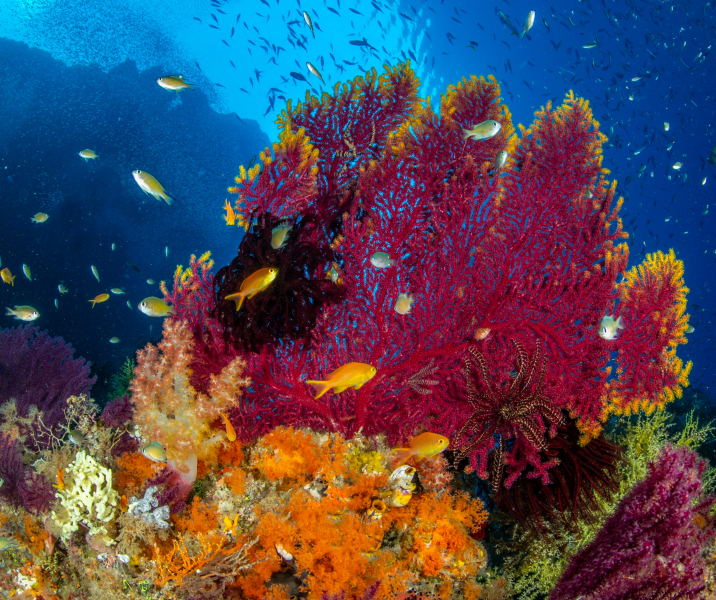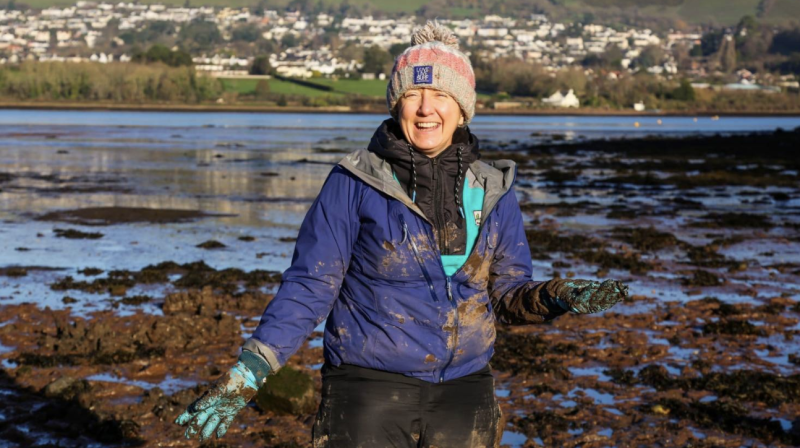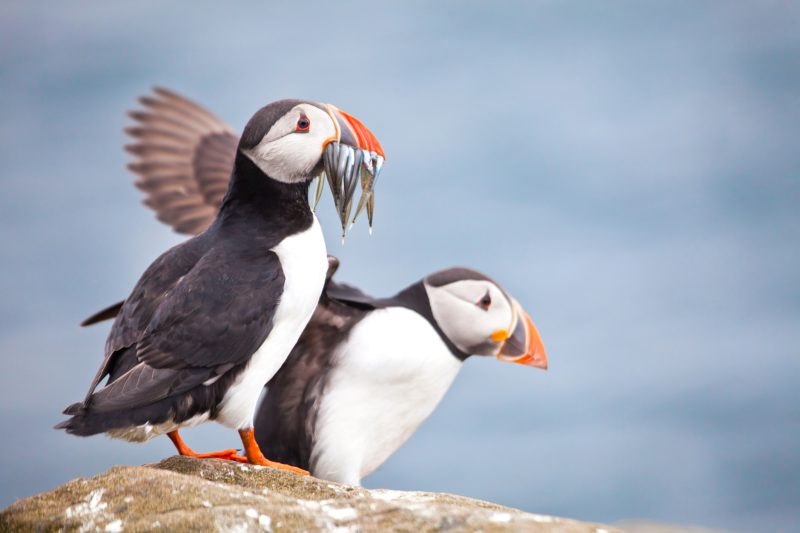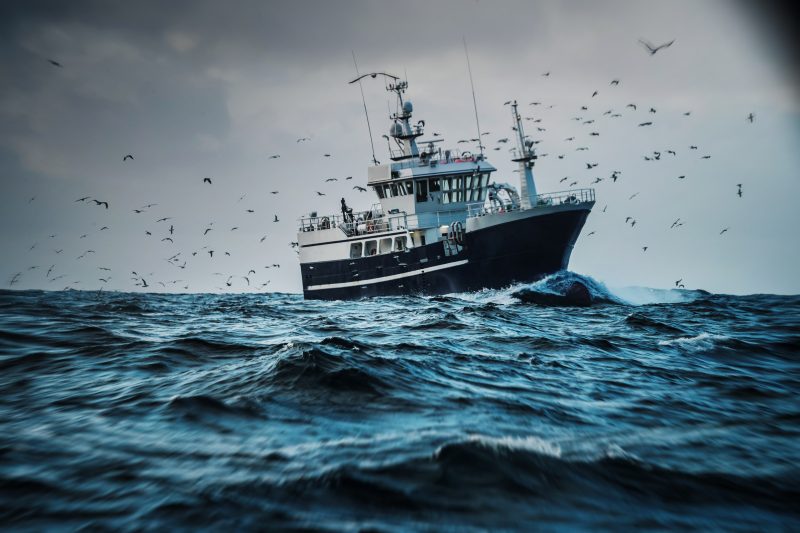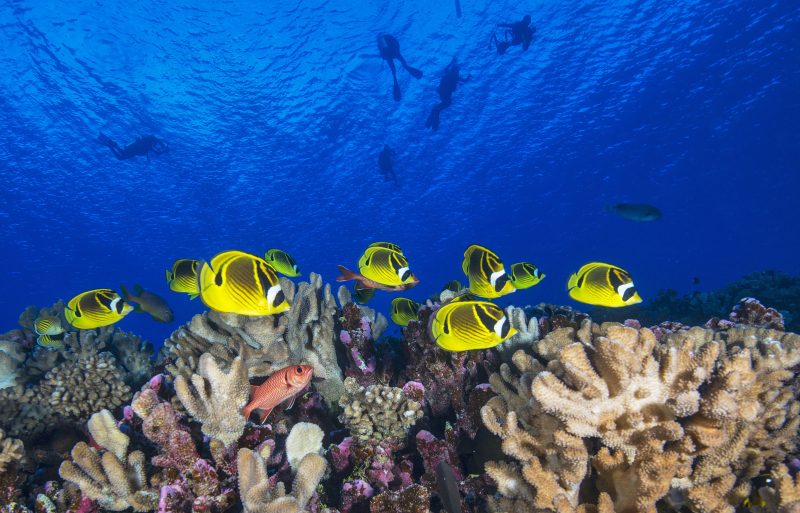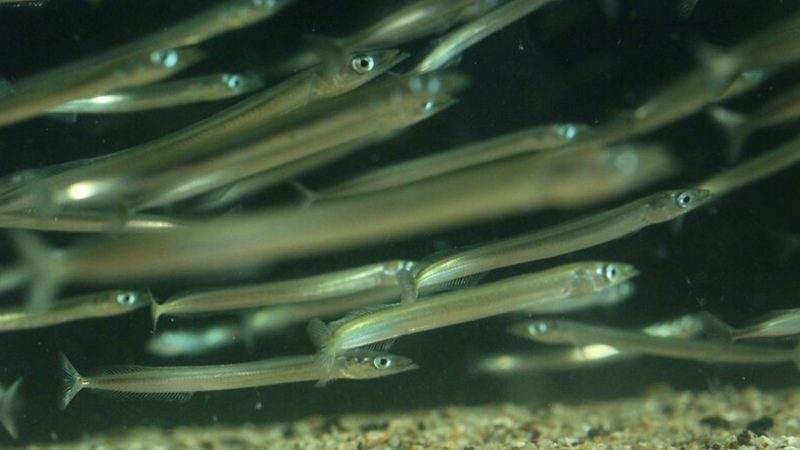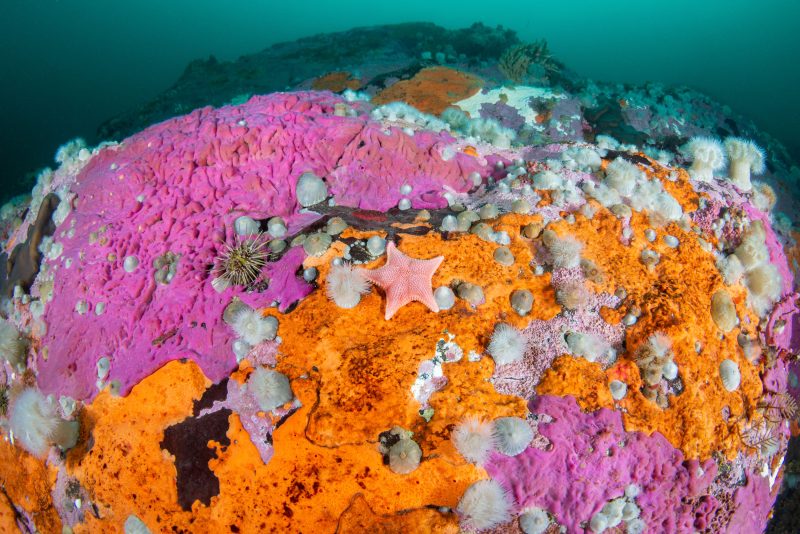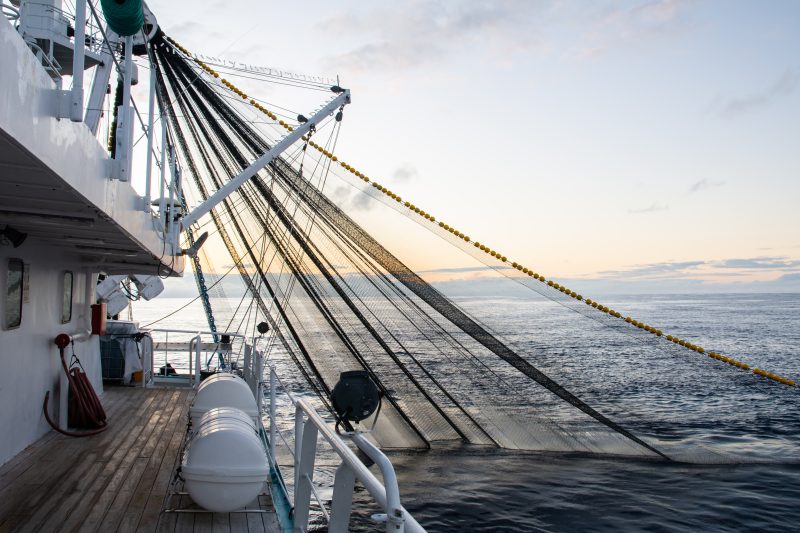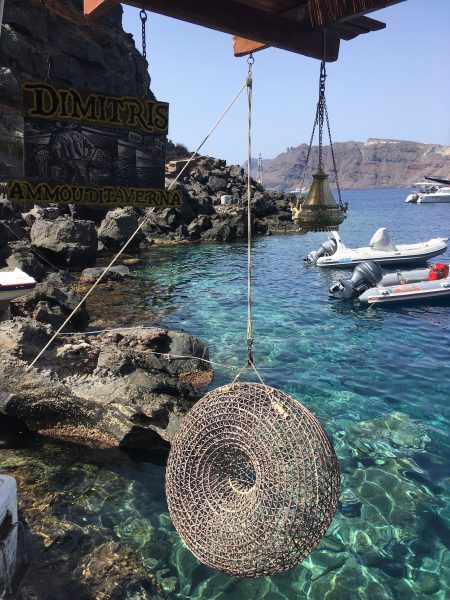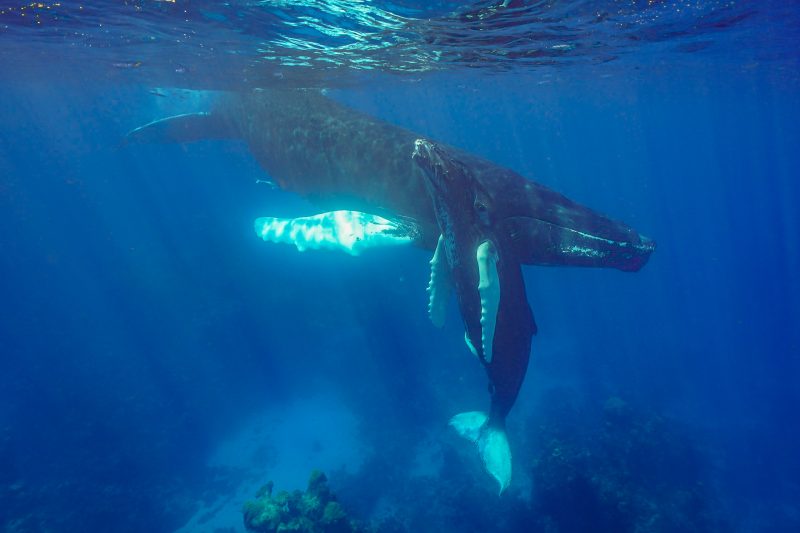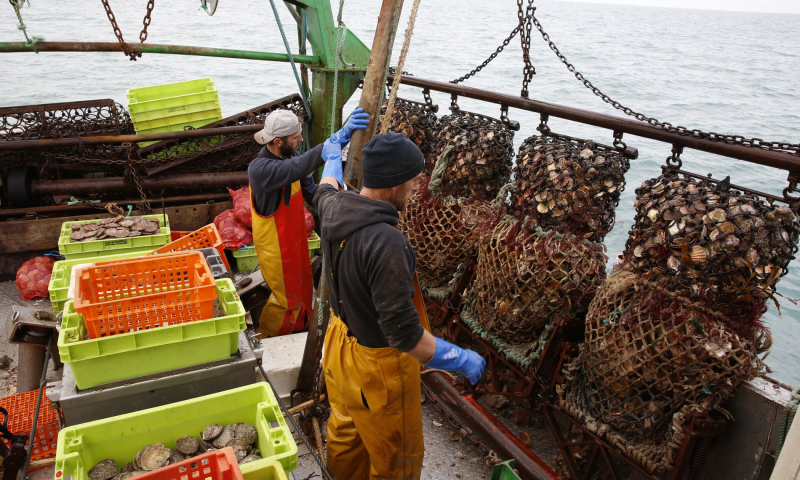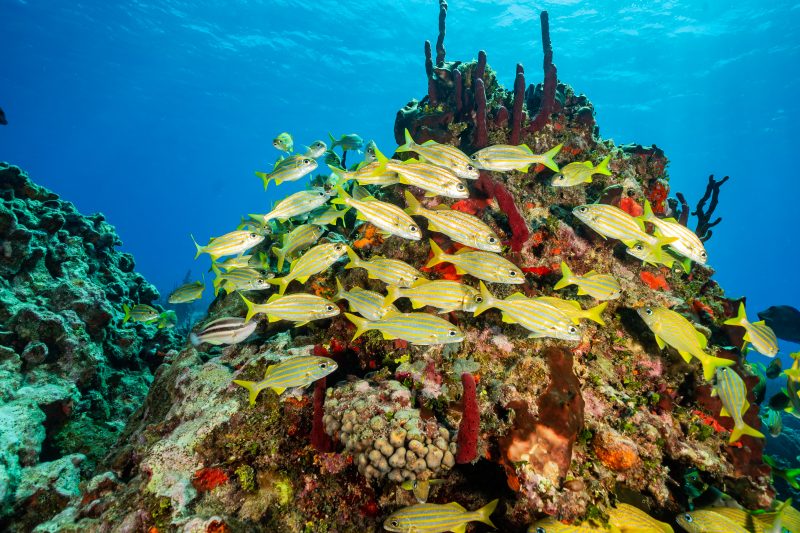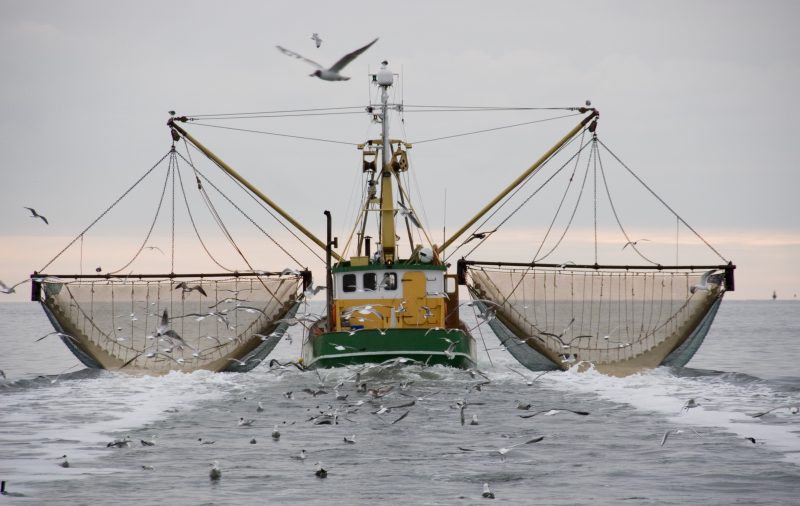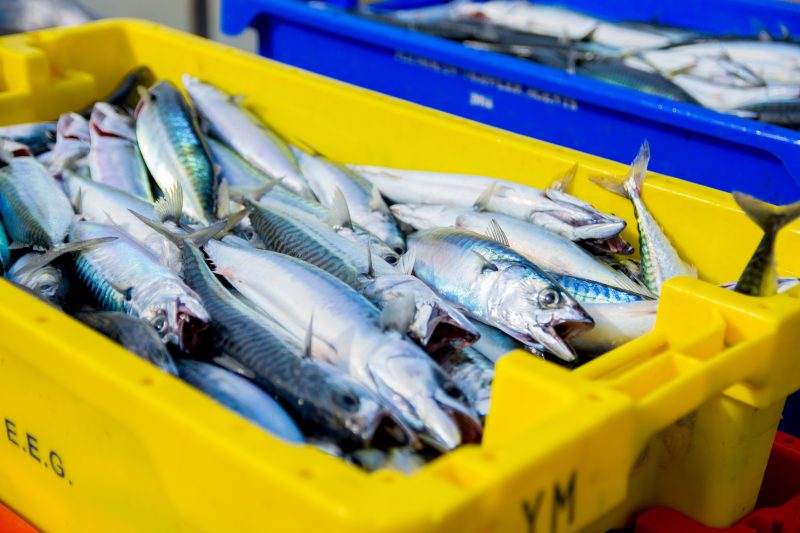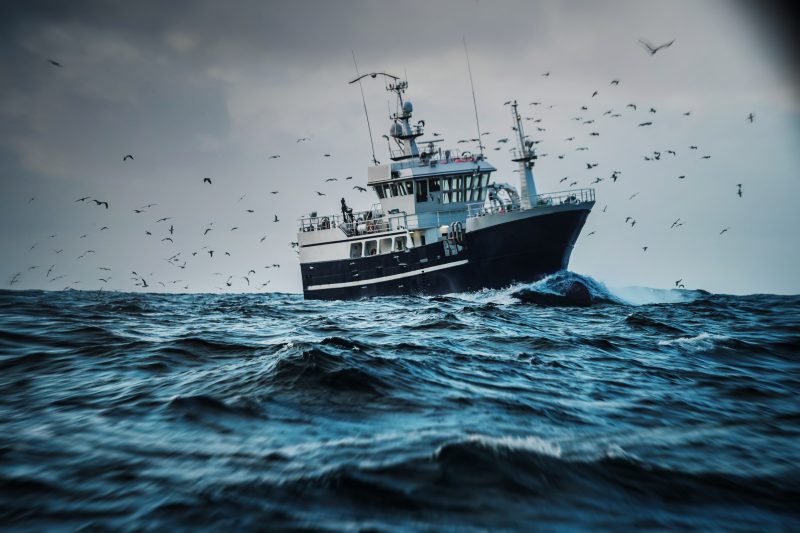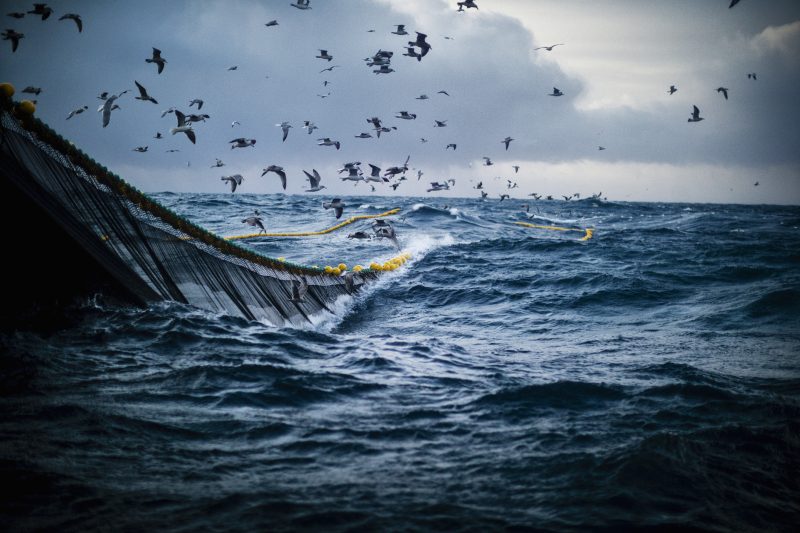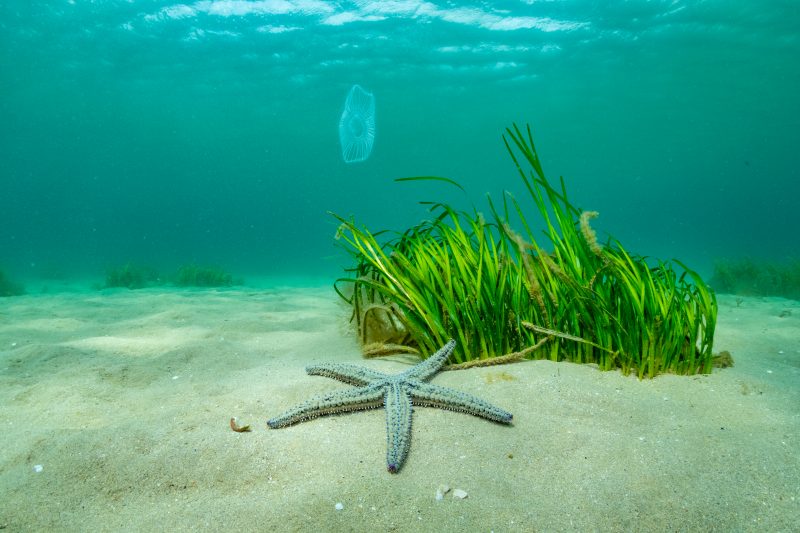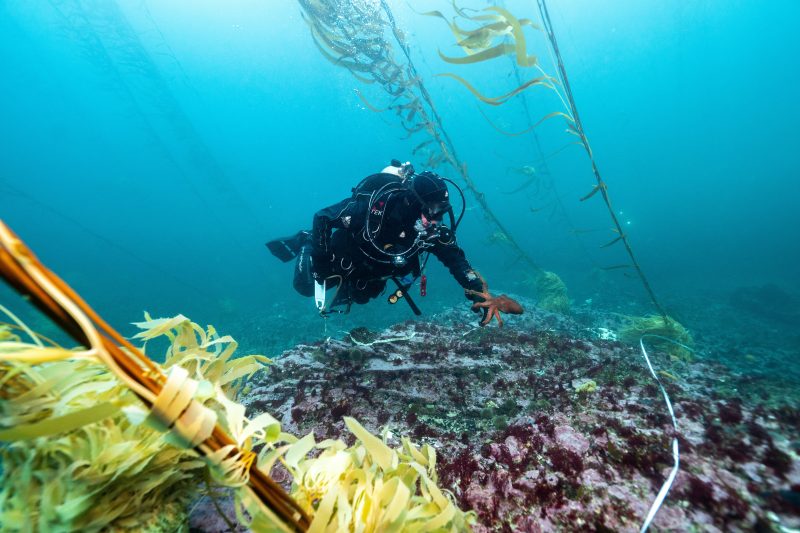During my first few hours in the BLUE office back in December 2017, Charles Clover told me about an exciting research expedition that would be taking place around St Helena in early 2018. However, securing a place on board the British Antarctic Survey’s research vessel, the RRS James Clark Ross, was no easy feat. First, I had to pass thorough medicals, buy a whole range of PPE equipment (that’s safety gear to you and me) and PAT test all my electronics to make sure I didn’t fry the British Antarctic Survey network.
I finally received the ‘OK’ to join the expedition less than 12 hours before its departure. The next morning, I met with SHG’s Marine Section – Leeann Henry, Alison Small, Paul Cherrett and Donny O’Bey – and we made our way to the impressive RRS JCR on the Enchanted Isle where we were greeted by a large Chilean devil ray (Mobula tarapacana) circling in the water beneath us – a good omen for the trip ahead.

A question I was asked frequently, both in the lead up to the trip and while on board, was why I – a non-governmental representative – wanted to join an expedition that was a joint effort between the Centre for Environmental, Fisheries and Aquaculture Science (Cefas) as part of their four-year government Blue Belt Programme (2016-2020) and the British Antarctic Survey (BAS) as part of their Official Development Assistance Programme.
My answer was simple. Our primary objective as the Marine Team of the St Helena National Trust is to support and champion the delivery of the island’s IUCN Category VI Marine Protected Area, ensuring that it makes genuine conservation gains. To do this, we first need to understand exactly what is out there and, from a zoning and management perspective, we need to know where it is.
Once on board the ship, we met with the rest of the expedition team – scientists from the RSPB, the South Atlantic Environmental Research Institute (SAERI), Plymouth University and the UK Hydrographic Office. We soon met with Professor Martin Collins from Cefas who told us that the expedition followed three key work themes – seabed mapping, analysis of benthic (seafloor) biodiversity and analysis of pelagic (water column) ecosystems. Our itinerary could change at any time, depending on survey conditions, and the research team work 24 hours a day to maximise sampling effort.

I teamed up with Donny O’Bey – St Helena’s ferry operator and assistant to the EMD during their marine fieldwork sessions. To maximise our exposure to the one week of research, it was recommended that we do 12-hour shifts spanning both day and night, 12 – 12. By the time we had observed some of the deployments during the first afternoon and finished discussions with Marine Ecologist Dave Barnes about increasing BAS stakeholder outreach on St Helena, Donny and I realised that we may have drawn the short straw, with our first shift starting just a few hours later at midnight!
Vampire Squid:
At 11.30pm I began my first shift, making my way with Donny to the upper deck, as the rectangular midwater trawl (RMT) was being retrieved from a depth of approximately 1000m. The small size of the RMT means that it can be deployed in a relatively efficient and targeted manner, collecting pelagic samples from a range of depths.

Some of the more interesting finds were tiny Stumpy lobster larvae and a juvenile anglerfish with an undeveloped lure and visible photophores (light emitting cells) just above the mouth. There were also decapods (crustaceans) in molt, hatchet fish that were kept for stomach content analysis and strange eel-like creatures called ‘nemichthys’. We found a ‘Jewelled Squid’ with unusual cartilaginous ridges all over its legs and body and two eyes of different sizes; the small eye for spotting bioluminescent organisms against the darkness below and the larger eye for observing the silhouette of prey above.

Shortly after the RMT, bongos (large cylindrical nets) were deployed vertically in the water column to a depth of approximately 200m to sample zooplankton. At 3am it was time for a quick caffeine fix, during which Donny told me about his adventures to South Georgia in search of toothfish, the 18-day voyage from Durban to South America and how he watched someone throw an orange at Miss Uruguay’s face during a street parade. After being awake for nearly 20 hours, the whole conversation seemed more than surreal.

A few hours later I saw a CTD sent to approximately 530m depth (10m off the seabed). CTDs record fluorescence, temperature, salinity, light, depth and oxygen levels, feeding the data back to the ship in real time and therefore allowing the scientists on board to pick out interesting features on the monitors and select what should be sampled. I then learned that Donny has been helping the Marine Section of SHG to deploy their own CTD around the waters of St Helena, supplying additional data to that collected on this expedition.
The first Agassiz Trawl (AGT) that I observed was deployed near Speery Island. Used for benthic surveys, the AGT reached depths of 750m for a duration of five minutes, during which Dave Barnes explained the subtleties of reading the monitor for cable tension fluctuations relating to seabed topography.
In the first deployment we found two species of starfish, gastropod shells, bivalves, maerl, flatworms, live and dead coral polyps, soft corals, lace sponges, brittle stars and a crab metropolis! I assisted Dave and BAS Geneticist, Chester Sands, with data entry and specimen cataloguing, during which time Dave commented on how positive the findings were: “while the sample size was small, it highlighted the diversity of the seabed around St Helena.”

Chester explained how the trawl had been redesigned to be smaller and spend less time on the seabed to reduce environmental impact, even though the impact of this unit would be negligible compared to the damage caused by icebergs in South Georgia, for example.

During more RMTs, a small fish, thought to be part of the mackerel family, was kept for otolith sampling – otoliths are small bones found in the head of fish which can be extracted and used to age a fish, much like the rings on a tree. We also discovered a plastic pen lid in amongst bright blue-eyed lobster larvae, not the first plastic we had encountered and certainly not the last.

When time allowed, plastic sampling was conducted using a small surface net, AVANI Trawl, on the starboard side of RRS JCR.

The net had collected plastics as well as tiny Man o’ War jellyfish and minute fish. Some of the micro plastics sank while some floated in a collection jar – highlighting their ubiquitous nature in the oceans. All samples were sent off to CEFAS back in the UK for processing.

Sperm whales:
The haul from the second to last RMT was incredibly diverse, filled with more armoured creatures than I had ever seen before. Nephrops the size of your hand, shrimps that looked as if they were about to go into battle, fierce looking jet-black angler fish and a vampire squid which was in such good condition that it was immediately preserved in formalin, ready to be sent to the British Museum for display. BLUE are hopeful that the creation of a Marine Centre on St Helena will, amongst many other things, enable unusual samples such as these to remain on display on St Helena.

Plankton specialist Rachel Shreeve was keen to show us beautiful blue-eyed copepods, jellies that looked like the human eye and arthropods with beautiful purple daisy-like patterns on their appendages, all visible only under the microscope.

As the sorting tray was about to be cleaned, I spotted a pair of eyes looking up. They belonged to a tiny pufferfish larva smaller than your little finger nail and, to my amazement, everyone believed it to be endemic to St Helena!
Donny and I were keen to learn as much as possible while on board, so we ventured up to the Bridge where marine mammal expert Steph Martin and seabird specialist Andy Schofield from the RSPB were conducting their surveys. Unfortunately, Steph informed us that the sea state was classified as a ‘5’, rendering visual surveys almost impossible due to the rough conditions.
Steph went on to teach us how to ID whales using the ventral surface of their flukes. She also told us incredible stories of tagging killer whales in the Antarctic with a cross bow. It was during this conversation that we learned of sperm whale sightings around St Helena that had occurred while we were off duty during the day and catching up on our sleep!
Discussion about St Helena’s megafauna followed, with Donny giving detailed descriptions of humpback whales visiting the shallows, including high traffic areas such as the Papanui shipwreck in James’ Bay. He spoke of seeing large female humpbacks surrounded by pools of blood and white liquid and witnessing numerous whales ‘tail sailing’ (a type of behavior which has been documented all over the world and which correlates to breeding grounds for Right whales in Argentina). Steph was incredibly excited by these accounts and was keen to look into the potential for a new marine research project for St Helena.
Depth-defying algae:
One of my favourite finds of the trip was an angler fish (the first of its kind found on the trip so far) which had a retractable and jointed lure with the most beautiful and perfectly intact filaments.
Another highlight came from an AGT which had revealed an incredible variety of life, including the first nudibranch of my trip – a beautiful orange and yellow specimen, preserved for subsequent identification. In addition to urchins, eels and crabs, the benthic team were most excited about the evidence of healthy green algae at a depth of 115m. This usually shallow water algae was testament to just how far sunlight can penetrate the crystal clear waters of St Helena.

The team also found large quantities of living maerl – something that Chester said is a very good sign. He explained that because maerl takes a long time to grow, the large quantity of the sample acts as evidence against the future use of unsustainable fishing techniques such as large scale commercial trawling which, apart from the obvious physical destruction, would cause huge levels of sediment suspension and the smothering of remaining maerl beds.
The only time I saw the team’s spirits waver was upon retrieval of one of the last AGTs. Once the unit was hoisted out of the water, it all seemed reminiscent of the scene from Jurassic Park, where the crane used to feed the T-rex is brought back into view, broken, bent and battered. Not to worry, local hero Donny O’Bey stepped in and worked on the ripped net meticulously until it was as good as new. The BAS team marveled at his skill and the whole event highlighted the importance of traditional maritime skills and knowledge.

As we began our return journey to St Helena, we were joined by a pod of Pantropical dolphins (Stenella attenuata) and I had a chance to reflect on the intense week of research.
Having studied and interacted with 3-4m manta rays almost every day of my life for the past three and a half years, the new (but also familiar) experience of being immersed in a laboratory environment where nearly everything had to be looked at under a microscope, was something I relished. I would leave the ship knowing more about the diversity of St Helena’s waters and where the ‘hotspots’ of marine life that need protecting are. Looking forward, I also know where SHNT and BLUE must focus their conservation and research efforts during the development of the IUCN Category VI MPA.
I have to say a huge thank you to everyone on board who taught, guided and inspired us – but particularly to Principal Scientific Officer Simon Morley and Martin Collins for allowing and helping me to join the research expedition. Roll on RRS JCR 2019!



